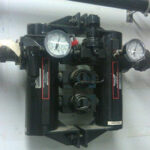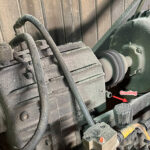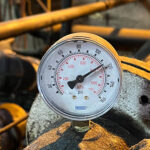
One important item discussed in Compressed Air Challenge’s Fundamentals of Compressed Air Systems seminars is leakage. The most common waste category is compressed air. When studies are done looking at leakage rates compared to the total amount of compressed air produced, on average somewhere between 20% and 30% is found at manufacturing facilities (Fig. 1). Combined with other items like artificial demand and inappropriate uses, the true total typically adds up to 50%, making the overall efficiency of a typical compressed air system very poor, and leading to high operating costs.
One day, we received an excited phone call. A compressed air auditor had found a system breaking his all-time record leakage percentage. Many years ago, he had found a plant that had a leakage rate of 80% of average, but now he had found one higher, and he said that he had the data to prove it!

Leakage percentages can be found by monitoring and observing the plant flow during various operating times. This is most easily done using a time-based data logger system; nobody enjoys attending a plant during nights and on weekends looking for leaks. The audit did just this and showed the results of his measurements (Fig. 2). The average flow going into the plant was 50 cfm during all hours, yet the flow during the hours nobody was in the plant was 49.8 cfm. The production load represented a bit of fuzz on top of the flow profile. This calculates to a non-productive flow of 99.6% — a new record!
The system is small, of course, so the total electrical operating cost for this 100 hp VSD compressor system is only about $18,000 per year. However, running this large compressor on such low demand causes issues with the compressor lubrication. VSDs should not be running at minimum speed for long periods of time, as the lack of heat in this condition allows the buildup of water in the lubricant. Recent costs for repair due to this problem were more than $12,000.
The auditor is hoping he can help his client greatly reduce the non-productive load in this plant and is currently charging up his ultrasonic leak detector getting ready for some detailed work. Wish him luck!





Leave a Reply